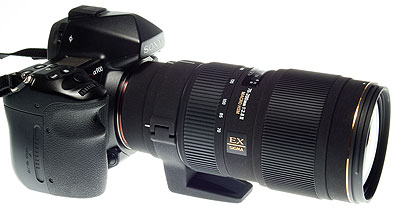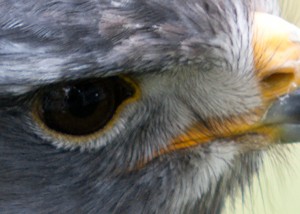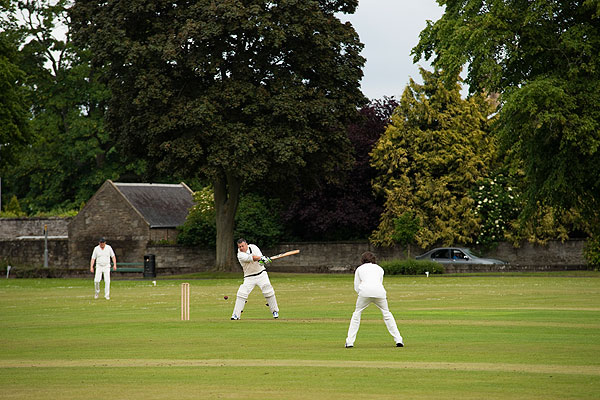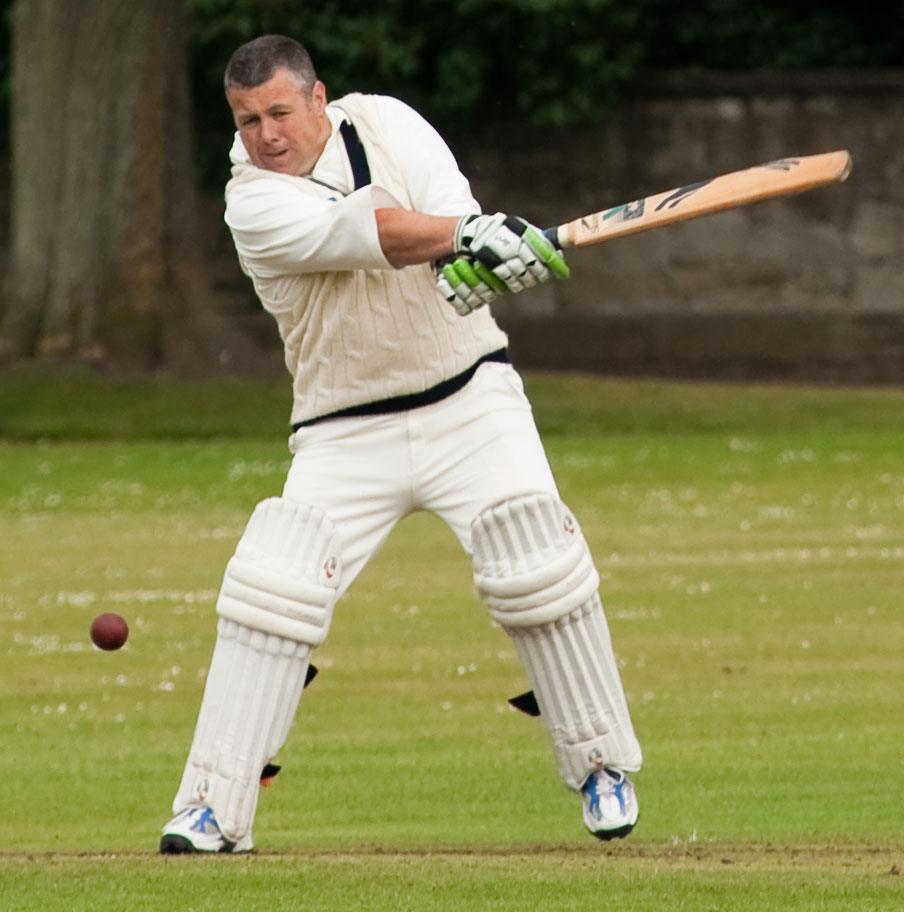The Sigma 70-200mm f2.8 EX DG HSM Macro II
SIGMA redesigned their 70-200mm not long ago to change the EX version to DG, introducing new coatings which greatly improved microcontrast and eliminated digital camera sensor reflections. In 2008, this was further upgraded to the Macro II model with HSM sonic motor focusing, a new optical design capable of focusing down to 1 metre distance. In 2009 this became available, along with matched HSM-compatible 2X and 1.4X converters, for the Sony Alpha mount.

This lens is an excellent match for the Alpha 900, not only in size (comparable to the Sony 70-200mm SSM) but in the Zen black finish and overall heft. I make no apologies for testing the lens mainly in the A900, because it is in overall field coverage that the optical advances have been made. Both the Nikon (due to be replaced) and Sony 70-200mm f/2.8 designs are biased to APS-C/DX format, sacrificing some peripheral field resolution especially when pulled in to close focus range at 200mm.
The Sigma design not only has closer minimum focus (1m versus 1.2m for the Minolta-Sony design) but a much flatter focus field at this distance. While peak central resolution lags slightly behind the marque lenses, edge and corner sharpness is way ahead for studio product, flower, small animal, found object, large insect and similar close-range work. It can be argued that this type of work is irrelevant to a fast 70-200mm zoom. Well, not for me. I prefer my lens once fitted to handle all distances acceptably.

While the field is extremely flat, distortion is present, as can be seen in this carefully lined-up 200mm close focus study. But this is by no means excessive distortion for 200mm, especially at close range. Some correction in Photoshop deals with it anyway:

What you see here is ‘where the Minolta-Sony 70-200mm SSM could not go’ on the A900. The focus was not quite so close, and the loss of outer field sharpness made subjects as technical as this unsuitable. Nice soft flower shots with blurred outer fields were no problem, but they are fine with the Sigma 70-200mm too. It has good smooth bokeh, with a hint of ‘colour bokeh’ linked to a fairly high level of chromatic aberration. This is a sharply rendered deviation in image size between R, G and B channels and once corrected from raw using ACR or Lightroom is invisible. Despite the APO designation the Minolta 70-200mm is not free from CA either.
Users have made comparisons with the Tamron 70-200mm, which is claimed to be sharper wide open at 200mm. It may perhaps be so at infinity, but I have used it on the Canon 50D and obtained fairly noticeable halo effects at f/2.8, getting worse at closer focus. A typical example here shows the Tamron’s wide open sharpness on the EOS 50D at ISO 200:

The Tamron bokeh is very wiry, unlike the smooth Sigma bokeh, and personally I find the aberration halo harder to live with than the slightly soft wide open image of the Sigma which is free from this kind of ‘glow’.
The Sigma lens uses a total of five ELD/SLD (low dispersion) elements within a complex 18-element design, and that indicates a high order of correction as their target. Assembly quality constraints probably account for any shortfall, and I have no reason to consider the Tamron assembly any more or less consistent than Sigma’s. I don’t have any exact or similar Sigma comparison, but here is a good example of a close-up at full aperture – not in ideal lighting, or it would not have been shot wide open:

This is a 100% detail of the file without any sharpening applied for web. The full picture is:

This may also give you some idea of the bokeh of the lens, and the extremely limited depth of field at f/2.8. Both Tamron and Sigma are the same price in the UK. I bought the Sigma, after testing it earlier on Nikon D3, which allowed me to see how it handled the close-up range. I also bought the 2X HSM converter (though I notice that almost two months after I did so, there are still posts around claiming that no compatible converters are available!). I have tested several third party converters with the HSM lens, and none work – not even the 8-contact digital Teleplus models. They transmit the functions, but the lens hunts and jitters wildly. The actual Sigma converter seems essential to handle the protocol correctly.

How good is the converter and lens combo? If you study the Sigma MTF charts, you’ll see that the central (APS-C) area is still much better for MTF than the edge, and that 200mm is proportionately less good than 70mm. Well, adding a 2X converter will only blow up that ‘better’ central area – but it’s also only of use in the 100-200mm range of the lens (200-400mm with the 2X). Surprisingly, the converter seems to exceed theoretical magnified resolution. Work around f/8-f/11 (sensible with any converter) and very fine detail gets resolved. It’s most effective for close work, producing an overall 1:1.75 scale from the lens’s native 1:3.5, already an impressive close up ratio.

It’s at 300mm, f/11, with the converter. But that is not really the main use of 2X on a 70-200mm. Take cricket (or if you are from a non-cricketing nation, puzzle about the appeal of cricket!). The photographer can not be closer than the boundary line, which means that on full frame, a 600mm is the perfect lens for shots of the batsman or bowler. Here is a 200mm view:

This is all you get by way of scale from the closest possible viewpoint. It’s on the A900, so of course an A700 would show a larger crop. ISO 320 and f/5 allowed 1/500th shutter speed by early evening light, this was in the last few balls of the match. I do not use motordrive (continuous 5fps + C-AF), normally single shot, and to get this and my other sample pic I only took two frames. These are all I shot. I passed this match as the last three balls were being bowled. Here is what the Sigma produced at 100%:

That’s from raw without any sharpening for web. What may surprise is the next shot, taken with the 2X converter and bumping up the A900 to ISO 640:

Again, the very fast response of the A900 – about as close to a real-time SLR like the old Contax RTS as you can get from an AF DSLR – helped a single timed shot catch the right moment. Here is a 100% size clip from the 2X converted image (400mm equivalent):

You can see there’s a bit of hazy glow here at one third of a stop down (f/6.3. But in the original TIFF before saving the file for web viewing, the Sabre name on the bat is better rendered. Putting it simply, the 2X converter is adding to the lens, not just blowing up what you might get if you shot at 200mm and used Genuine Fractals. I now use the converter a lot. I also hang the entire rig off the A900 body. I checked repeatedly to see whether the near 1500g weight was pulling on the lens mount spring, and it doesn’t. I support the lens most of the time, but don’t worry if I need to strap-dangle it for a while. It is not too big, with or without converter, or too heavy to hang loose.
Here is an example of the lens used in the studio, at 200mm, stopped fown to f/18 (I need to get my studio flash heads changed for ones with lower power options). It shows the Gold, Silver and Bronze ‘Oskar’ awards given by the Master Photographers Association each year in their annual awards, and was commissioned for their trade and member flyer literature and website. The 200mm angle stacks up the three statues neatly.

This is also destined to be made into 2m high pop-up displays, which the 24MB file from the A900 will handle perfectly.
The Sigma 70-200mm f/2.8 new design is, as far as my money goes, the best current 70-200mm short of the Canon 70-200mm (which is not available in Sony fit!). I have now been using it on many different subjects, and it’s had plenty of chances to reveal weakness. It has not done so. It is perhaps a touch less crisp centrally than the Sony equivalent, but it is well under half the price (in the UK, more like a third of the price). The HSM focusing is considerably faster than Sony SSM, and this is not always a good thing as the lens has no focus limiter and can do a quick 100 yard sprint if it does miss the target. It’s as quiet as the Sony, and the whole thing feels pretty solid. The rear zoom control falls under the hand very neatly, placed close to the camera, and the focus ring is soft-decoupled so you get full-time DMF and no risk of interfering with the AF unless you want to. Additional note: I have been testing the 18-250mm Sigma OS HSM for Sony, and the HSM in this does not decouple, no manual adjustment is possible without switching to MF. Do not assume that because the 70-200mm HSM allows ‘DMF’ or ‘full time manual focus’, all other Sigma HSMs for Sony will do the same.

It comes with an excellent semi-rigid padded fabric case, shoulder strap, tripod mount (detachable, 1/4 inch thread only) and deep lens shade. The front rim is non-rotating and accepts 77mm filters.

No lens of this type is small but believe it or not, it is 1cm shorter than the Tamron and over 2cm shorter than Nikon’s black beauty.

It makes a great landscape lens as well as a portrait, sports or concert lens – I have yet to try it in a concert situation and prefer to use small glass!

So, to sum the Sigma 70-200mm f/2.8 HSM up:
It focuses closer than any other 70-200mm except the Tamron, and maintains a flatter field across full frame at close range. While performance of this lens will be perceived as comparable to the Sony 70-200mm at longer ranges, it offers a significant improvement at closer portrait to ‘macro’ distances.
The HSM focusing is noticeably faster than Sony’s SSM. It is incompatible with third party teleconverters even if eight contacts are present. When used with the dedicated Sigma converter(s), focus speed is not reduced and in absence of any focus limiter this can result in overshooting and hunting with difficult targets. The lack of a focus range limiter is the one single omission which reduces the functionality of the Sigma most.
Central resolution wide open at 70mm-120mm is of a very high order, with a slight loss towards the edges accompanied by visible CA. From 120-200mm, the centre and edge sharpness is more consistent but lower overall and CA is strong, requiring both red/cyan and yellow/blue corrections (typically around -40 in ACR, slightly less Y/B than R/C). Stopping down to f/4 brings the 120-200mm quality more into line with the 70-120mm range, and by f/5.6 sharpness exceeds the A900 sensor requirement across the frame at any focal length. Benefits of using aperture f/8, f/11 are mainly from increased depth of field. Settings smaller than f/11 (f/13-f/22) lose crispness as diffraction limits resolution.
Bokeh is excellent especially for close-ups at 200mm, with some visible colour effects tinting focus transitions before and behind the focus plane. Colour transmission is slightly warm with a yellow bias, not unlike old Minolta glass. Contrast is high at 70mm to moderate at 200mm at f/2.8, improving to very high at all focal lengths by f/8. Distortion shows very slight barrel at 70mm changing to variable but low levels of pincushion between 100mm and 200mm, a neutral point being somewhere around 85-100mm depending on focus distance. Vignetting is present, mainly affecting the extreme corners of the image only at the long end; it is not completely removed by stopping down.
Optical performance with the 2X converter tested is better than would be expected, with minimal CA (see below) and very slightly increased pincushion distortion. The converter is best used two stops down (working aperture f/11) for critical sharpness, or 1/3rd stop down (f/6.3) for acceptable results where the widest aperture is demanded.
Raw shooting is strongly advised to get the best from this lens, as the CA and vignetting can be fully corrected usin Adobe Camera Raw (in CS4 environment, sadly not in Elements) or Lightroom. It is possble to remove the CA from JPEGs using Photoshop’s Lens Distortion filter. Just to clarify, I also found CA was present from the Minolta 70-200mm design (equally removable) and that the Minolta Apo D 2X converter markedly increased CA.
The f/2.8 maximum aperture automatically switches on the central f/2.8 AF sensor of the Alpha 900 and 700, improving focus accuracy and speed of lock-on by 2X (the same applies to the Canon version used on Canon semi pro and pro bodies). There is no benefit on A100-A380 or KM7D/5D models. This does not affect low light focus limits, the f/2.8 sensor has exactly the same light level sensitivity as the regular sensors. It only affects accuracy (rangefinder base). Our lens does not need any micro AF adjustment on the Alpha 900.
Lens Construction: 18 Elements in 15 Groups
Angle of View: 34.3 – 12.3 degrees
Number of Diaphragm Blades: 9
Minimum Aperture: f/22
Minimum Focusing Distance: 100cm
Maximum Magnification: 1:3.5
Filter Size: 77mm
Diameter 86.6mm; Length 184mm
Weight: 1345g with tripod collar attached
SRP: £799.99 inc VAT (UK)

Walkaround tele
I have never been a real fan of 70-200mm f/2.8 zooms. I had the original 80-200mm f/2.8 AF Minolta which was wonderful, but at a time when I needed to work with rollfilm and 35mm together and tried to keep my 35mm system small and light (eventually opting to use two Minolta CLE bodies and abandon SLRs completely for travel). In 2006, I bought a Minolta 70-200mm f/2.8 SSM and converter, but the 105mm-300mm equivalent crop of the Alpha 100 and 700 made it a special purpose lens. Also, the £2000+ price at the time (now officially £1849 in the UK, but sold by SonyStyle for £1549) put me off just fitting the lens for everyday use.
The Sigma and Alpha 900 combined have changed that. The 900 is ‘medium format’ as far as results go – there is no need to carry two systems, or indeed two bodies, though any responsible digital photographer should always have a second DSLR available when travelling or working on assignment, if not two spares. The lens is the same price as my 70-300mm SSM G and gives noticeably sharper results though lacking the range. So, for the first time, I’ve started leaving the 70-200mm on the body and using it every day. By the way, those are Miniature Dobermann Pinschers encountered during the Kelso dog show week and quickly grab-shot as their owner walked towards me.
– David Kilpatrick
Footnote: since posting this review, I have looked at the dPreview test. I try to avoid looking at other tests before writing, as it can prejudice my assessment. I can only suggest that dPreview have never used other 70-200mms at ‘macro’ range, as the problems they identify simply have not been apparent in my shots. Maybe the 2X converter magically corrects the aperture-related focus shift, but I suggest there is a more subtle reason. They tested the Sigma on a Nikon body. Nikon does not use f/2.8 AF sensors – all their sensors work at a virtual aperture of f/5.6. Therefore, the focus is always correct for f/5.6 only. Yet they found the f/2.8 results apparently agreed with the AF, which is impossible using the Nikon body! Sony A700 and A900, Canon 5D, 5D MkII, and all 1D series have f/2.8 sensors which means they focus perfectly at full aperture.
This should mean that I would experience an even worse focus shift on stopping down at close range. This has not happened. The colour bokeh they mention is present, but it is cleared by normal CA adjustment. They appear to have found a fault with the lens at macro (minimum) focus when the truth is that is exceeds the performance of all other 70-200mm designs at this range.

This an f/2.8 closest focus shot from the Minolta 70-200mm SSM at 200mm, and it was taken on an Alpha 700. The curvature of field is clearly visible (softness to the outer zone), and I can assure you, it gets much worse on full frame! I did not come to reviewing the Sigma in ignorance of the weaknesses of other more expensive lenses. You can believe whatever test sites, equipped with targets and standardised lab procedures, that you wish. I used to do that stuff 20 years ago for magazines, and eventually realised that it did not tell the whole story very well. Today I take a few pix and look at them. Simple practical results can tell you more than any amount of procedural testing. That is not to say you should ignore chart-testing, and I hold a couple of German tech-lab test experts in high regard.
In reply to one of the comments below, I am adding this simple diagram which shows the effect of a curved focus plane combined with an out-of-parallel sensor. The curve, and the angle, are both very exaggerated here (a sensor 2 degrees out of true would be useless). The grey represents the acceptable depth of focus at the sensor plane – if the black line, the actual focus plane of the lens, falls within this grey zone the image will look sharp. You can see that the effect of the curved field and the out-of-true sensor in this case produce a small zone of poor sharpness to the right as seen, but with improved sharpness at the extreme right (this would be degraded by other aberrations, so the image might or might not appear equal to the middle or the adjacent zone). At the left, you will see that the curved field deviates considerably from the sensor plane and falls well outside the depth of focus. Combined with aberrations and vignetting, this will show a markedly unsharp ‘end’ of the picture.

You won’t find this diagram in textbooks because it is not part of received knowledge. It is based on observation and deduction. If any optical expert would like to challenge it, please go ahead. You may also wish to consider what happens with any lens with a curved field (that means most lenses, at one focus distance or another) when an AF-sensor module is not perfectly collimated – these can also be set at an angle. – DK 16/7/09

Dear David,
I read your comment about the dpreview test of this lens with Nikon body. I read this one first and was diaapointed about the lenses performance. So after your test I gained some hope, but unfortunatelly I am not that much into the technical details. Does this mean that nikon with its 5.6 sensor will not achieve good results in general with this lens? or is there a chance? My girlfriend is intereested in this lens for her D700 (sorry, mo Sony :-)).
Thanks for clarification
Regards,
mhhd
Does anyone have experience with this lens and an Alpha 100? I’m debating on whether or not to get this lens or upgrading my camera body to an a700 before they are discontinued. For now I can only pick one or the other. Let me know if a lens like this would be a waste with a slow AF body like the a100. Thank you.
The Alpha 100 AF is only slow with screw drive focusing. With the HSM, it becomes as fast as any other body – the HSM AF has a big effect on the 100, real improvement will be seen.
David
A tilted sensor will still be out of focus in some zones, and perfect alignment is the only reasonable QC goal. I don’t have a web link for FOTO, there are many mags with a similar name, it is the Swedish one. I don’t keep the copies I get as we end up submerged in paper that way.
I am able to revise the on-line report here, the BJP articles have to be just so many words, and I also have to think in terms of their market.
David
Sir,
Thanks VERY much for your VERY prompt response.
In response to your first answer, does that mean for focusing off of the sensor in live view mode it matters not whether the sensor is perfectly aligned?
Secondly, that FOTO magazine you talk of, I think I may have stumbled across it before but not too sure. Do you by chance have a web link for them? Thanks.
Thanks for link to Anders Uschold. I am sure I recall you mentioning him before either over at the PhotoClubAlpha forum or in the BJP (by the way, I have read your Sigma 70-200 twice now, as it appeared in the BJP this week 🙂 but the write up here is more informative)
Regards,
With on-sensor live focus, the point focused is generally perfectly focused – wherever it happens to be. It can be affected by aperture related issues, but many live AF systems operate at the working aperture, not wide open. With the Nikon cameras having LV focus and also offering micro-AF adjustment for the phase detect sensor system, the corrections only apply to phase detect AF, and you use the LV enlarged focus to fine tune the micro adjustment until the two match. With the A900, you have to take shots and review them.
2 – first, the Zeiss testing facility, which was set up originally with Hasselblad and still supplies lens test data to some TIPA members (Technical Image Press Association). Swedish FOTO magazine for example uses the Zeiss source data to create the technical part of their tests. As far I know, it’s still all running the same way – multiple samples of the lens must be supplied for testing, figures are averaged, no comment is ever made – they just provide the readings.
Secondly, Anders Uschold. He seems to have stopped providing material to the British Journal, I guess they never mastered the art of translating his stuff properly. He’s very good at showing how the combination of lens+sensor is what matters. His purely technical language means he can make strong criticisms of lenses without sounding as if he is trashing them.
http://www.uschold.com
David
Sir,
Thank you for a very good review, and for an extremely educaational write up.
Two things.
1)
I note that you point to the issues of sensor alignment, and AF-sensor module needing to be perfectly collimated.
How then do these issues, of uneven focus across a frame, play out with cameras such as the Panasonic G1 which is an interchangeable lens mirroless design?
And of course, a related issue would be, if ever Sony produces a camera with off-sensor live view, will there be potential for a difference between the focus results obtained by way of live view and that of focusing traditionaly?
2)
You also said:
“Simple practical results can tell you more than any amount of procedural testing. That is not to say you should ignore chart-testing, and I hold a couple of German tech-lab test experts in high regard.”
Would you be so kind as to share with us the details of those German tech-labs? I have come across one that I find interesting, Photozone.de.
Regards,
I have added a little paragraph at the end of the original story, with a diagram showing how field curvature combined with sensor alignment error can spook results. If your 80-200mm had a dead flat focus plane, it might have fallen within acceptable limits even with a slightly out of parallel sensor, and the falloff would have looked more or less symmetrical if the centre focus was perfect.
Take a lens with a curved focus field, add some FF or BF error, some sensor alignment error – I’m sure you can see the potential for various combinations of fairly ugly, asymmetrical result.
David
Thanks for the further comments David. I would note with respect to parts of an image being sharp and others not, that for my “brick wall test” I was at the time comparing the 70-200 SSM to my 80-200/2.8 HS APO (which I still had), and the latter lens either did not show a similar issue wide open, or if it did it was in a different portion of the frame (I don’t recall, and would have to try to find the photos and look at them to be certain – what I do remember is that I concluded it was a lens rather than camera issue; if it was the camera/sensor then the same problem should have appeared for both lenses). If I recall correctly, it also was not the same at different focal lengths (just as one lens performed ever so slightly better at one focal length, while the other might eke out a superior showing at a different focal length). This also suggested to me that it was not the sensor but the lens. As for what characteristic of the lens caused it I won’t speculate (don’t know enough to do that 🙂 ).
When one thinks about how critical is the alignment of various components in the focusing chain, it is sort of amazing how the whole system works so well (generally speaking). The elements of the lens, the lens mount and lens mounting flange, the mirror assembly, the location of the focusing screen/AF sensor and the location of the imaging sensor. All need to be in proper alignment and calibration for the system to work right. No doubt there are some tolerances (however small) for each of these things, but if you have a camera and/or lens for which some or many of these components are slightly off, it can be difficult to figure out where the problem lies and get the fix right. But that’s really getting off topic.
Thanks again.
I am not able to provide direct comparisons with the Minolta as I sold that within a few days of trying it on the Alpha 900 with the 2X APO and on its own. The pic at the end was added in an edit, after realising that I had commented on the curved field of the Minolta at close range, but provided no real evidence. I do have other pix on file of course but I never used the Minolta 70-200mm as much as I have been using the Sigma. My Minolta also tended to be softer on one side of the image than the other, but the focal plane alignment accuracy of the D7D sensor (on which it got most use) is poor compared to the A900. The A900 has about the best parallel/plane setup I have come across. It still shows some error with the Sigma 12-24mm at 12mm and I have to remember to change my vertical shooting orientation to keep the ground and distance sharp – wrong choice and the tops of buildings start to blur slightly. But it’s still far better in terms of setup than the Canon 5D MkII I tested with a 16-35mm f/2.8 MkII – that showed a really noticeable ‘one end soft’ issue.
In my experience, these problems are very rarely the lens (though test reports nearly always say they are). They are to do with sensor flatness and focal plane parallelism/collimation, plus AF front and back focus errors, plus lens field curvature and aperture related focus shift. The combination of all factors can result in the point of focus being just acceptable centrally, one side of the frame being better focused but with more spherical aberration sharpness loss (so looking just acceptable as well), and the opposite side of the frame being much worse focused and having the same aberrations leading to a slightly smeared blur.
The alignments required are critical, especially with ultrawides and wide aperture lenses. Most DSLRs are just not well enough set up to perform well. My A900 is one of the best I’ve ever used. The Nikon D3 (3 bodies) we have used have been excellent, D700 not quite so. Canon, very variable. The specialist repair company Fixation, in London, offer a service to align and centre sensors on Canon and Nikon to higher standards than the factory spec. They don’t do Sony or any sensor-stabilised cams.
David
One thing to remember with respect to Sigma lenses, and reviews of Sigma lenses, is a past history of inconsistent quality control (Sigma is not alone in this, witness the CZ 16-80 issues discussed shortly after that lens’ release in various reviews, and what seems to be wide variations in quality in Canon’s 100-400/4.5-5.6 based on various user reports as another example). Thus, one reviewer or user could get a good copy of a lens, while another may not. Given that David has apparently tested (or at least used) two versions of the lens, one in Nikon mount, the other the Alpha mount, and seemingly obtained consistent results for the lens in both mounts, that suggests that perhaps Sigma’s quality control for this lens is better than its reputation. Or he just lucked out and got two good samples. 🙂
I was somewhat surprised that the only “comparison” shot from the 70-200/2.8 Sony/Minolta lens was near the end, and not really a comparison, more like a stand-alone shot. It would have been interesting to see some comparison shots, particularly at “normal” focus distances (the review does seem to concentrate more on David’s particular uses of the lens at closer focus distances).
David does mention that the Sony/Minolta lens has higher central resolution, which could be a better fit for some types of photography (such as model, wildlife, sports or other contexts where the subject may be more centrally located and resolution at the frame’s edges are not as important. Thus, while the Sigma may be the superior lens for David’s intended uses, it may not be for other uses.
One thing I know from my own use of the 70-200/2.8 is that the optical characteristics can also vary in different areas of the frame (perhaps it’s the field curvature David references, poor centering of elements, or some other cause). Thus, one corner of an image may be noticeably better than another wide open when viewed at 100% (the differences I have observed usually disappear a stop or so down from maximum, and may not be as visible in normal photography – I’ve seen it in my “brick wall tests”). This seems to be a somewhat normal occurrence with lenses based on other lens reviews/comparisons I have seen of various lenses. Although David said nothing about this, it would seem that the Sigma lens did not suffer from this problem.
Also interesting was the performance David found with the 2x converter. That’s very unusual based on the use of 2x converters with other similar f:2.8 lenses that I’ve read about (including Canon and Sony/Minolta lenses).
Thanks David.
After this post I’m sereiously thinking about such a lens. I was and actually still is a bit concerned about the Sony 20-200G due to it’s past. Don’t get me wrong here but it resides back on former Minolta technology which in my believe is not fully capable to deliver what newest digital cameras can. As it was written, Sony lens seems to fit better on smaller sensors…Bingo!
By the way, Sigma says both HSM teleconverters may only be determined by the serial numbers once neither name nor specification did change! believed it or not!
The new box says:
Apo Tele Converter 2X DG AF
For Sony D
HyperSonicMotor
Compatible
(that is not a sticker, the For Sony D bit is a sticker, the HSM compatible is printed on the box – so while the converter may look identical, retail stock is clearly distinguishable)